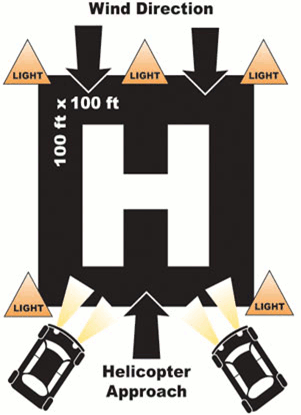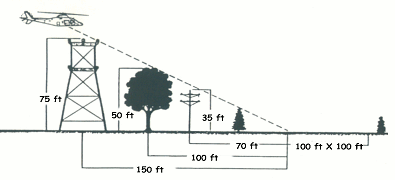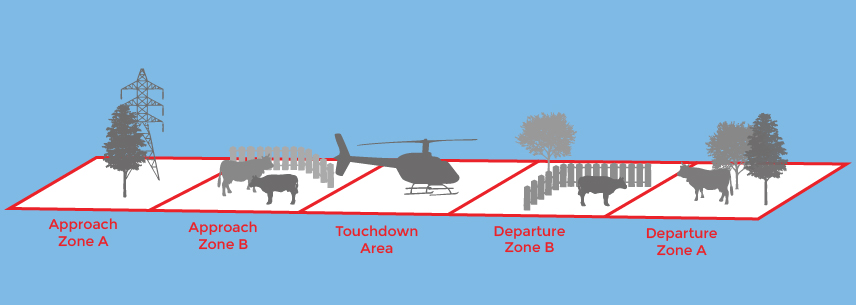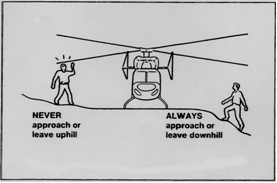Landing Zone Safety
Establishing & Maintaining a Safe Helicopter Landing Zone
The thought of calling for air medical assistance is generally associated with an already stressful situation. The safe arrival and departure of that aircraft is paramount to be able to provide the assistance requested. This is a brief summary of the key elements for establishing and maintaining a safe helicopter landing zone (LZ).
Landing Zone
- There should be a Landing Zone Commander established who will select and prepare the landing zone.
- The LZ Commander will assume charge of the landing zone, secure it, and maintain crowd control before, during and after the aircraft departure.
- The LZ commander should be the person designated to communicate with the aircraft via predesignated radio frequency.
- The LZ should be 100 ft by 100 ft area free of wires or obstacles.
- All unnecessary persons and vehicles should be kept at least 200 ft away from the aircraft.
- No smoking anywhere around the aircraft.
- The surface should be firm, level, and clear of debris (avoiding tall grass if possible). Any snow or ice on LZ should be communicated to the pilot.
- No lights should be pointed upward toward the aircraft as this may impede the vision of the pilot and crew.

Landing Zone Approach
- The aircraft approach path depicted above demonstrates the importance of identifying all objects within a large area adjacent to the landing zone.
- Search for any tall obstructions and communicate them to the pilot.
- These obstructions should be illuminated whenever possible.
- The aircraft will approach the landing zone into the wind.
- Wires should be identified within the approach path and communicated to the pilot or dispatch.

Ground Safety
- Ground personnel should never approach the helicopter unless instructed to do so by a flight crew member.
- The flight crew will direct all loading or unloading, and will open and close the aircraft doors.
- When directed to do so always approach or depart the aircraft in full view of the pilot (between 10 and 2 o’clock depending on the model).
- Remember to stay clear of the tail rotor.
- The aircraft may stay running at the scene at which any approach or departure from the aircraft should be done in a crouched position.
- All loose items coats, scarves, hats and etc should be removed or secured prior to approaching the aircraft.
- All items such as IV poles, IV bags, equipment and even hands or arms should not be raised above shoulder height.
- If possible wear eye and hearing protection. The rotorwash will toss any loose gravel, dirt, and etc. The aircraft is also extremely loud.


